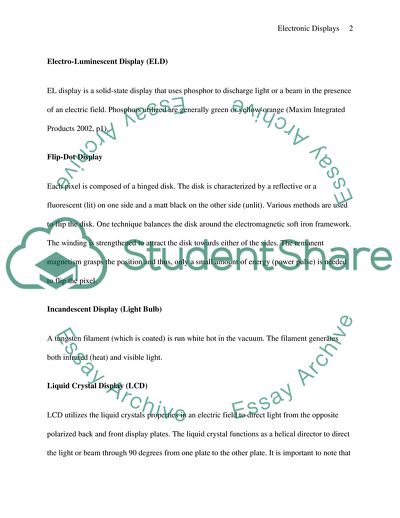Cite this document
(Different Types of Electronic Displays Essay Example | Topics and Well Written Essays - 1750 words, n.d.)
Different Types of Electronic Displays Essay Example | Topics and Well Written Essays - 1750 words. https://studentshare.org/design-technology/1764710-electronic-displays
Different Types of Electronic Displays Essay Example | Topics and Well Written Essays - 1750 words. https://studentshare.org/design-technology/1764710-electronic-displays
(Different Types of Electronic Displays Essay Example | Topics and Well Written Essays - 1750 Words)
Different Types of Electronic Displays Essay Example | Topics and Well Written Essays - 1750 Words. https://studentshare.org/design-technology/1764710-electronic-displays.
Different Types of Electronic Displays Essay Example | Topics and Well Written Essays - 1750 Words. https://studentshare.org/design-technology/1764710-electronic-displays.
“Different Types of Electronic Displays Essay Example | Topics and Well Written Essays - 1750 Words”. https://studentshare.org/design-technology/1764710-electronic-displays.


